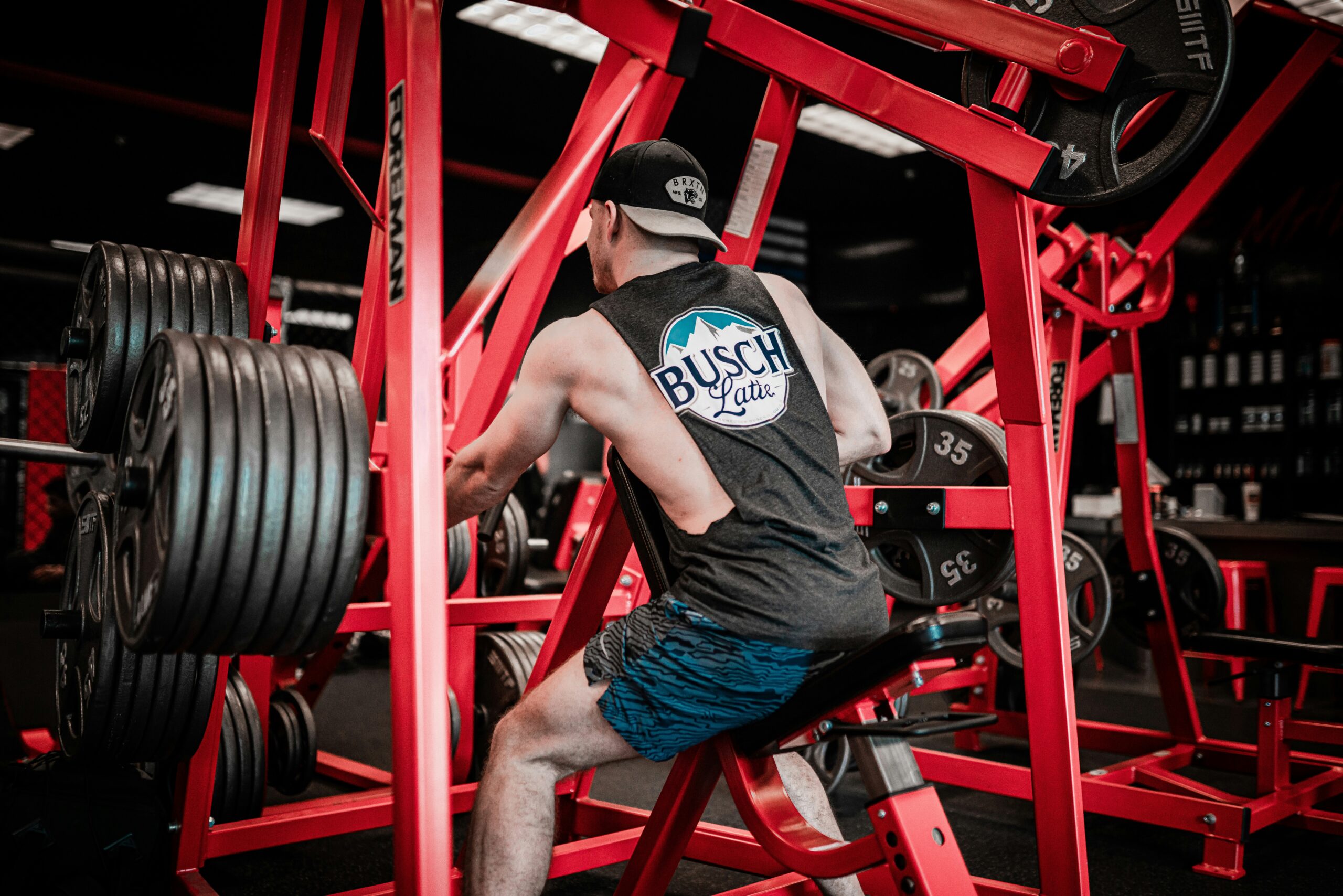
Fitness Tips and Tricks for Beginners
Starting a fitness journey can be both exciting and overwhelming, especially for beginners. It’s important to approach fitness with the right mindset and have a plan in place to ensure success. Whether you’re looking to lose weight, build muscle, or simply improve your overall health, these tips and tricks will help you get started on the right track.
1. Set realistic goals: Before you begin your fitness journey, it’s important to set realistic goals. This will help you stay motivated and focused on your progress. Start by identifying what you want to achieve, whether it’s losing a certain amount of weight or being able to run a certain distance. Then, break your goals down into smaller, achievable milestones.
2. Find an exercise routine you enjoy: One of the keys to sticking with a fitness routine is finding an exercise you enjoy. Whether it’s running, swimming, or dancing, choose an activity that you look forward to doing. This will make it easier to stay consistent and make exercise a regular part of your life.
3. Start slow and gradually increase intensity: It’s important to start slow and gradually increase the intensity of your workouts. This will help prevent injury and allow your body to adapt to the new demands. If you’re new to exercise, begin with low-impact activities such as walking or cycling and gradually incorporate more challenging exercises as you build strength and endurance.
4. Don’t forget about nutrition: Exercise alone is not enough to achieve your fitness goals. It’s important to fuel your body with the right nutrients to support your workouts and aid in recovery. Focus on eating a balanced diet that includes plenty of fruits, vegetables, lean proteins, and whole grains. Stay hydrated by drinking enough water throughout the day.
5. Get enough rest and recovery: Rest and recovery are just as important as exercise itself. Allow your body time to recover between workouts to prevent overtraining and reduce the risk of injury. Aim for at least 7-8 hours of quality sleep each night and incorporate rest days into your exercise routine.
6. Find a support system: Surround yourself with like-minded individuals who can support and motivate you on your fitness journey. This can be friends, family members, or joining a fitness community or group. Having a support system can help keep you accountable and provide encouragement when you need it.
7. Track your progress: Keep track of your workouts, measurements, and how you feel throughout your fitness journey. This will allow you to see your progress over time and stay motivated. Consider using a fitness app or journal to record your workouts and set new goals.
Remember, fitness is a lifelong journey, and it’s important to be patient with yourself. Celebrate your achievements along the way and don’t be too hard on yourself if you have setbacks. With dedication, consistency, and the right mindset, you can achieve your fitness goals and live a healthier, happier life.
When setting realistic goals for your fitness journey, it’s important to consider various factors that may influence your progress. These factors include your current fitness level, lifestyle, and any potential limitations or barriers you may face.
Firstly, assess your current fitness level. This will help you determine where you are starting from and what areas you need to focus on. For example, if you are a beginner, your goal may be to start with a regular exercise routine that includes both cardiovascular and strength training exercises. On the other hand, if you have been exercising regularly but want to take your fitness to the next level, your goal may be to increase the intensity or duration of your workouts.
Secondly, consider your lifestyle and schedule. It’s important to set goals that are realistic and feasible within your current commitments. If you have a busy work schedule or family responsibilities, it may not be realistic to commit to working out for two hours every day. Instead, you could aim for shorter, more frequent workouts or find ways to incorporate physical activity into your daily routine, such as taking the stairs instead of the elevator or going for a walk during your lunch break.
Additionally, it’s important to take into account any potential limitations or barriers you may face. This could include physical limitations, such as injuries or chronic conditions, or external factors, such as access to equipment or facilities. If you have any physical limitations, it’s important to consult with a healthcare professional or a certified fitness trainer to ensure that your goals are safe and appropriate for your specific situation. If you have limited access to equipment or facilities, you can explore alternative options such as bodyweight exercises, outdoor activities, or home workout programs.
By considering these factors and setting realistic goals, you are more likely to stay motivated and committed to your fitness journey. Remember that progress takes time and effort, and it’s important to celebrate each milestone along the way. Whether it’s losing a few pounds, increasing your strength or endurance, or simply feeling more energized and confident, each small achievement is a step towards your ultimate goal.
2. Find an Exercise Routine You Enjoy
Exercise doesn’t have to be a chore. In fact, it should be something you look forward to and enjoy. Find a type of exercise that you genuinely enjoy, whether it’s running, dancing, swimming, or playing a sport. Trying out different activities and classes can help you discover what you love and what works best for your body.
Remember, the best exercise routine is the one that you will stick to. If you dread going to the gym, try finding alternative ways to stay active, such as hiking, biking, or taking a dance class. The key is to find something that you enjoy and that fits into your lifestyle.
When it comes to finding an exercise routine you enjoy, it’s important to consider your personal preferences and interests. If you love being outdoors and enjoy the beauty of nature, activities like hiking or biking can be a great option for you. Not only will you be getting exercise, but you’ll also be able to enjoy the fresh air and scenery.
If you’re someone who enjoys being part of a team or competing, consider joining a sports league or taking up a sport like soccer or basketball. This can provide you with the opportunity to not only get your heart rate up but also engage in a social activity that brings you joy.
On the other hand, if you prefer a more individualized approach, activities like running or swimming can be a great fit. These activities allow you to set your own pace and challenge yourself at your own level. Plus, they can be done at your convenience, making it easier to incorporate them into your daily routine.
It’s also worth exploring different classes or group activities that are offered in your community. From dance classes to yoga sessions, there are countless options to choose from. Trying out different classes can not only help you find an exercise routine you enjoy but also introduce you to new people and expand your social circle.
Ultimately, the goal is to find an exercise routine that brings you joy and makes you feel good. When you enjoy the activity, you’re more likely to stick with it and make it a regular part of your life. So, don’t be afraid to try new things, be open to different possibilities, and find an exercise routine that works best for you.
3. Start Slow and Gradually Increase Intensity
When starting a new fitness routine, it’s important to start slow and gradually increase the intensity of your workouts. This allows your body to adapt and prevents injuries. If you push yourself too hard too soon, you may end up feeling discouraged or even getting hurt.
Begin with low-impact exercises, such as walking or swimming, and gradually incorporate more challenging activities as your fitness level improves. Listen to your body and give yourself time to recover between workouts. Remember, progress is not linear, and it’s okay to have ups and downs along the way.
Starting slow and gradually increasing the intensity is crucial for several reasons. First, it allows your body to adjust to the new demands you are placing on it. By starting with low-impact exercises, you give your muscles, joints, and cardiovascular system a chance to adapt and strengthen. This helps to prevent injuries that can occur when you jump into high-intensity workouts without proper preparation.
Additionally, starting slow and gradually increasing the intensity helps to build a solid foundation of fitness. It allows you to establish good form and technique, which is essential for preventing injuries and maximizing the effectiveness of your workouts. By mastering the basics before moving on to more challenging exercises, you set yourself up for long-term success.
Another benefit of starting slow is that it allows you to gauge your current fitness level and set realistic goals. By starting with exercises that are appropriate for your current abilities, you can track your progress and celebrate small victories along the way. This sense of accomplishment can help to keep you motivated and committed to your fitness routine.
As you gradually increase the intensity of your workouts, it’s important to listen to your body and give yourself time to recover. Pushing yourself too hard without allowing for adequate rest can lead to overtraining and burnout. It’s important to find a balance between challenging yourself and giving your body the time it needs to repair and rebuild.
Remember, progress is not always linear. There may be times when you experience setbacks or plateaus in your fitness journey. This is completely normal and should not discourage you. Instead, use these moments as opportunities to reassess your goals, adjust your training plan if necessary, and stay committed to your long-term health and well-being.
4. Incorporate Strength Training
While cardio exercises are great for improving cardiovascular health and burning calories, it’s important to also incorporate strength training into your fitness routine. Strength training helps build lean muscle mass, which can increase your metabolism and help you burn more calories throughout the day.
Don’t be intimidated by the weight room. Start with bodyweight exercises, such as push-ups, squats, and lunges, and gradually add weights as you get stronger. If you’re unsure about proper form or technique, consider working with a personal trainer or taking a strength training class.
Strength training offers numerous benefits beyond just burning calories. It can improve your overall strength, enhance your bone density, and increase your flexibility. Additionally, strength training can help prevent age-related muscle loss and reduce the risk of injury.
When incorporating strength training into your fitness routine, it’s important to focus on different muscle groups. This will ensure that you’re working all areas of your body and achieving a balanced physique. Include exercises that target your upper body, such as bicep curls, tricep dips, and shoulder presses. For your lower body, incorporate exercises like deadlifts, hamstring curls, and calf raises.
As you progress in your strength training journey, don’t forget to challenge yourself. Gradually increase the weight you’re lifting or the number of repetitions you’re performing to continue making progress. Remember to give your muscles time to recover by allowing for rest days in between strength training sessions.
In addition to traditional strength training exercises, consider incorporating functional movements into your routine. These movements mimic everyday activities and can help improve your overall fitness and performance. Examples of functional movements include squats, lunges, kettlebell swings, and medicine ball throws.
Remember, consistency is key when it comes to strength training. Aim to include at least two to three strength training sessions in your weekly routine. This will allow you to gradually increase your strength and achieve your fitness goals.
5. Stay Consistent
Consistency is key when it comes to fitness. It’s better to work out for 30 minutes every day than to do a 2-hour workout once a week. Make exercise a non-negotiable part of your daily routine, just like brushing your teeth or taking a shower.
Find ways to stay motivated and hold yourself accountable. This could be by tracking your workouts, joining a fitness community or challenge, or working out with a friend. Remember, every small effort adds up and contributes to your overall progress.
One effective way to stay consistent is by setting specific goals for yourself. Whether it’s running a certain distance, lifting a certain weight, or mastering a new yoga pose, having a clear objective can help keep you focused and motivated. Write down your goals and keep them somewhere visible, like on your bathroom mirror or on your phone’s lock screen.
In addition to setting goals, it’s important to establish a realistic workout schedule that fits into your daily life. Consider your work hours, family commitments, and other obligations, and carve out dedicated time for exercise. This could be early in the morning before work, during your lunch break, or in the evening after dinner. Find a time that works best for you and stick to it.
Another strategy to maintain consistency is to vary your workouts. Doing the same routine day after day can become monotonous and lead to boredom or burnout. Mix things up by trying different types of exercises, such as cardio, strength training, and flexibility exercises. You can also explore various fitness classes or outdoor activities to keep things interesting.
Lastly, remember that consistency is not about being perfect. There will be days when you feel tired or unmotivated, and that’s okay. The key is to keep showing up and doing something, even if it’s just a light workout or a short walk. Progress is not always linear, and it’s important to be kind to yourself and celebrate small victories along the way.
6. Listen to Your Body
One of the most important things you can do for your fitness journey is to listen to your body. Pay attention to how you feel during and after workouts. If something doesn’t feel right or causes pain, modify or stop the exercise.
Rest and recovery are just as important as exercise itself. Give yourself time to rest and recover between workouts to prevent overtraining and reduce the risk of injury. This could mean taking a rest day, doing a light stretching or yoga session, or simply getting a good night’s sleep.
When it comes to listening to your body, it’s also important to recognize the signs of overtraining. Pushing yourself too hard without giving your body enough time to recover can lead to fatigue, decreased performance, and even injury. Some common signs of overtraining include persistent muscle soreness, decreased motivation, increased irritability, and a weakened immune system.
It’s important to find a balance between challenging yourself and giving your body the rest it needs. This means being mindful of your body’s limits and not pushing yourself to the point of exhaustion. If you’re consistently feeling tired or run down, it may be a sign that you need to take a step back and reassess your training routine.
Listening to your body also means being aware of any underlying health conditions or injuries that may affect your ability to exercise. If you have a chronic condition or are recovering from an injury, it’s important to work with a healthcare professional or a qualified fitness trainer who can help you modify your workouts to accommodate your specific needs.
In addition to physical cues, it’s also important to pay attention to your mental and emotional well-being. Exercise can be a great stress reliever, but it’s important to listen to your body if you’re feeling overwhelmed or burnt out. Taking a break or incorporating activities that promote relaxation and mindfulness, such as meditation or deep breathing exercises, can help restore balance to your fitness routine.
Remember, your body is unique, and what works for one person may not work for another. By listening to your body and making adjustments as needed, you can create a fitness routine that supports your overall health and well-being.
7. Fuel Your Body with Nutritious Foods
Exercise and nutrition go hand in hand. In order to fuel your workouts and support your overall health, it’s important to eat a balanced diet that includes a variety of nutritious foods.
Focus on consuming whole, unprocessed foods such as fruits, vegetables, lean proteins, whole grains, and healthy fats. These foods are rich in essential vitamins, minerals, and antioxidants that help to support your immune system, promote muscle recovery, and enhance your overall performance.
When it comes to fruits and vegetables, aim for a colorful plate. Different colors indicate different nutrients, so by incorporating a variety of fruits and vegetables into your diet, you can ensure that you are getting a wide range of vitamins and minerals. For example, orange fruits and vegetables like carrots and sweet potatoes are high in beta-carotene, which is converted into vitamin A in the body and is important for healthy vision and immune function.
Lean proteins, such as chicken, turkey, fish, tofu, and legumes, provide the building blocks for muscle repair and growth. They are also a good source of iron, which is essential for oxygen transport and energy production.
Whole grains like brown rice, quinoa, and whole wheat bread are rich in fiber, which aids in digestion and helps to keep you feeling full and satisfied. They also provide a steady release of energy, making them a great choice for pre-workout meals.
Don’t forget about healthy fats! Foods like avocados, nuts, seeds, and olive oil are packed with monounsaturated and polyunsaturated fats, which are beneficial for heart health and can help to reduce inflammation in the body.
Stay hydrated by drinking plenty of water throughout the day, especially before, during, and after exercise. Water is essential for regulating body temperature, lubricating joints, and transporting nutrients and oxygen to your muscles.
Remember, it’s not about following a strict diet or depriving yourself of your favorite foods. Instead, aim for balance and moderation. Treat yourself occasionally, but make sure the majority of your meals are nourishing and provide the nutrients your body needs.




